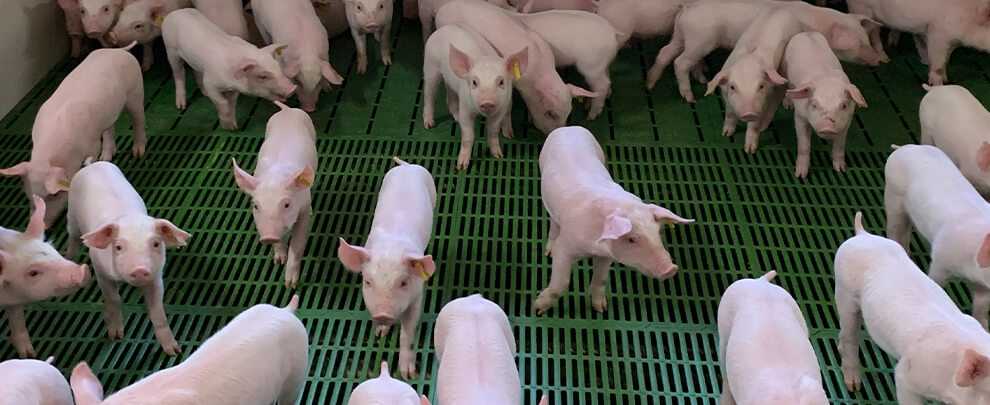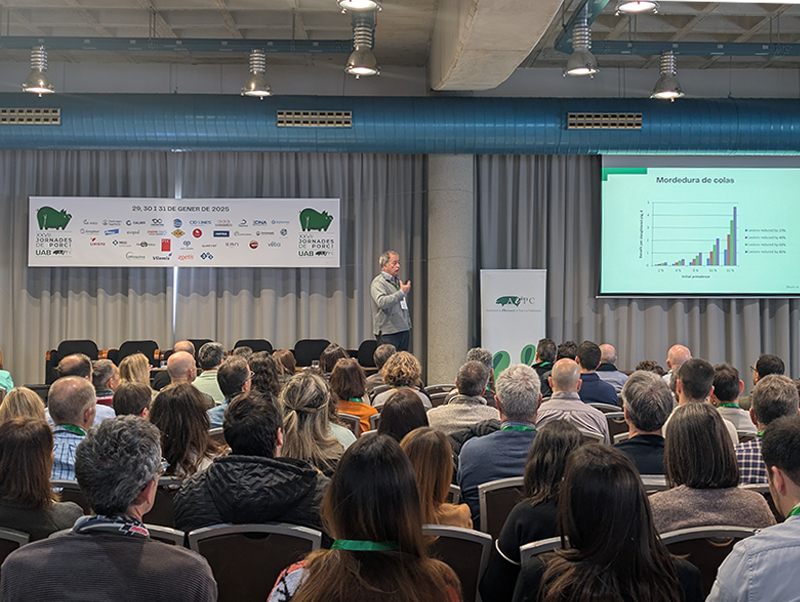Blog
Blog

Strategies to maximize animal welfare
04th February 2025 - News
Animal welfare has gained increasing importance, driven by both consumer demand and increasingly stringent regulations. While compliance with legislation and animal welfare certification are fundamental steps, their rigorous application combined with other strategies can significantly contribute to improving conditions on pig farms. Xavier Manteca, professor and expert in animal welfare, addressed these issues at the XVII Swine Conference of the UAB and AVPC, highlighting additional approaches to further progress in this field.

Xavier Manteca at the UAB and AVPC Swine Conferences. Photo: Rotecna.
The Importance of the Human Factor
One of the most effective strategies to improve animal welfare is investing in staff and their training. Motivated and well-trained personnel not only facilitate better handling but also strengthen the human-animal relationship, which has a direct positive impact on animal welfare. Recent studies indicate that this strategy is the most cost-effective, as well-trained staff can identify problems early and implement corrective measures quickly.
Animal welfare also largely depends on continuous observation of the animals. Asking them "what's wrong?" involves active and constant monitoring, allowing for the early detection of stress or discomfort. This practice is essential for minimizing the impact of issues such as tail biting. The human factor is key in preventing tail biting, as long as enrichment elements are properly managed, chronic stress factors are controlled, and animals are continuously supervised.
Welfare in Early Stages
Another fundamental strategy is investing in welfare from the early stages of production, particularly in maternity and transition phases. Improving welfare during these stages has a long-term positive impact on animal health and production.
Investing in welfare during the early life stages of piglets contributes to more robust development and a lower incidence of diseases, ultimately improving the overall profitability of the farm. Additionally, a positive environment in the early stages strengthens the animals' immune system, reducing the need for costly medical treatments and enhancing productivity.
Welfare as Part of Health Management
Animal welfare should be considered an integral part of health management on pig farms. The absence of disease is not only an indicator of welfare but also a crucial condition for achieving it. Integrating animal welfare into health programs allows for early detection of diseases and reduces the risk of disease spread.
Relationship with Profitability
Although the relationship between pig welfare and economic profitability is complex and depends on numerous variables, improving welfare can significantly contribute to farm profitability. Proper welfare management reduces stress and disease, leading to better feed conversion, lower veterinary costs, and ultimately, increased productivity.






